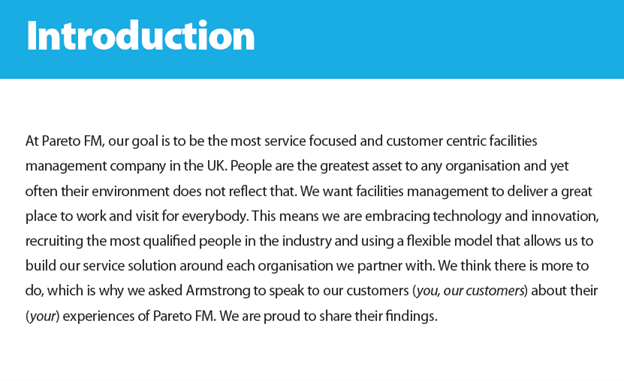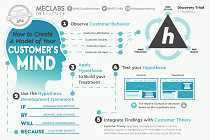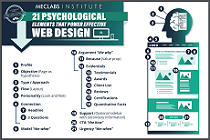
|
SUMMARY:
Customer feedback remains one of the most essential resources in marketing today. In a world awash with data, the key is not necessarily in collecting more but in transforming the data you do have into clear, actionable insights. Over the years, I’ve seen brands thrive when they put the customer first – listen to the voice of their customers and transform their strategies accordingly. Here’s a practical, step-by-step guide on how to do exactly that. |
Action Box: AI workflow can help do this with you
MeclabsAI can do it with you. Try the multi-agent workflow How To Transform Customer Feedback Into Insights (MeclabsAI is MarketingSherpa’s parent company).
The process begins with gathering insights from every customer touchpoint. From surveys and online reviews to focus groups and support tickets.
Think of this stage robust feedback as laying the foundation. It’s not enough to gather information – you must collect it in a systematic way that captures the nuances of customer sentiment.
For that reason, you may need to add new business processes. Let’s take customer reviews for example. You may currently have business processes that:
Those are smart actions to take from customer reviews in the short term. But make sure you’re thinking long-term as well. How are you using customer reviews as business intelligence? To better understand your customers and build your customer theory? Build a process and system to collect, track, and log those customers reviews, for example. And do the same for other customer feedback.
When I started my career in the very early days of the internet, conversations about brands, products, and services would happen in person at the office water cooler. Or between neighbors over a hedge. In other words, in the real world. And we marketers only dreamed of being able to be a fly on the wall in those conversations.
Now, you can systematically learn what customers really think about your products or services because they publicly post about it on the internet.
“We actually work with a lot of our customers to synthesize that [customer reviews]. What are the phrases that they're using? How do they talk to us? How do they talk about us versus our competitors? What are the keywords that they're using?” Allyson Havener, CMO, TrustRadius, explained to me in Go-To-Market Strategy: The voice of your customers should lead your marketing strategy (podcast episode #118).
Leave no stone unturned when collecting meaningful feedback.
And when I say no stone unturned that includes those closest to your brand – your employees and partners…when they fall into your ideal customer set. For example, I’ve heard many graphic designers tell me “I would never read all this copy. It’s too long for me.”
If they’re not in the ideal customer set – both being the same demographic/psychographic/etc. but also in the same place in the customer journey – I take that feedback with a big ‘ol grain of salt.
For example, you may not be interested in a long copy ad about different features and options in a new refrigerator as a graphic designer or marketing manager working on an ad campaign. But you know who might read every word of that ad? A person with a broken refrigerator.
And on your team, you may have some people with broken refrigerators – i.e., they are your ideal customers.
Sandy Rubinstein, CEO, DX, told me a great example in Marketing Campaigns: Lose the brand ego and lean into humility (podcast episode #130).
When she worked for The Box Music Television Network, founder Les Garland would ask her opinion even though she was the youngest and most inexperienced person in the room, squeezed into the back row in a corner taking notes. But she was in the ideal customer set for the brand.
“Seek out every voice in the room,” Rubinstein told me. “Give everyone an equal seat at the table, and the best ideas will bubble up.”
So get all that employee feedback – just remember who is speaking as the customer (because they are in the ideal customer set at the right place in the customer buying journey), and who is speaking as a marketer – who still can provide excellent insights, just cannot speak as the customer.
Once you have your feedback, organization is key. Break down the data by grouping comments based on relevant topics such as product features, service delivery, or customer pain points.
Then, segment these groups by demographics or customer types to see patterns emerge. For this reason, maybe the title of this article is a little off. You shouldn’t be concerned with ‘customer feedback,’ you should focus on customers’ feedback.’
The more granular you are in understanding your customer sets, the better you can serve them. For example, novice users might provide feedback favoring simplicity and more guidance, while experienced users push for advanced features and customization. If you only looked at the feedback in the aggregate you might overlook an opportunity to segment user education paths.
In B2B software, small businesses might appreciate robust customer support as part of the offer, whereas large enterprises want scalability and integration with existing systems. Again, just looking at aggregated feedback would impede your ability to tailor B2B service levels.
Here’s one more example. High-income users might prefer options for premium customization, while cost-conscious customers value competitive pricing and transparency in features. Understanding the different preferences of different ideal customer sets could give you the idea to create tiered offerings.
As David Apple, CMO, Intuitive Health, told me in Servant Leadership in Marketing: We are only as good as how we handle humbling moments: “We have different demographics around the country… it’s not the singular customer. So we get to write, create, educate… and learn so much about these unique dynamic micro markets.”
A clear structure not only makes the information manageable but also helps in pinpointing specific areas that demand strategic attention. For this reason, reviewing this info is not something that should only be delegated to lower-level employees in the organization or outside vendors.
Senior leaders should be hands-on reviewing the organization and segmentation of these insights. The key test is – does this view of the data provide the details necessary to help inform a key business decision?
After all, as Jim Kruger, CMO, Informatica told me, “The higher you get in the organization, the more details you need to know."
The real value of feedback comes from its analysis. Carefully sift through the organized data to identify recurring themes and trends. Look for signals, both positive and negative, that can guide your decisions. Use quantitative metrics to validate qualitative observations – correlate trends with conversion rates, customer lifetime values, or any other critical performance indicators.
This dual verification provides the confidence needed to move from insight to action.
To get you thinking, here’s an example of a team sifting through and interpreting the nuances in customer comments to reveal actionable patterns.
At one SaaS company Robert Gilbreath led, customer surveys and support tickets kept pointing to ‘more integrations’ as a top request. At first, the team assumed customers meant major systems like Salesforce or HubSpot.
“When we manually reviewed responses and support threads, Trello, Slack, and Mailchimp came up far more than Salesforce or HubSpot,” said Robert Gilbreath, fractional CMO and SaaS advisor.
The team shifted its roadmap to prioritize those integrations.
They then highlighted the integrations in onboarding and marketing campaigns. They didn’t just launch them and hope for the best. They walked users through the integrations during setup, added tooltips and use cases, and trained the success team to highlight them.
The impact was immediate: adoption improved noticeably, churn among SMB customers dropped, and messaging resonated better with the actual pain points users had been trying to tell them about.
“Our internal challenge was the bias toward ‘enterprise’ integrations. It took some digging and clear examples to convince others that users were really asking for the tools they used day to day, not just the biggest names,” he said. “Customers often speak in broad strokes, but the actionable insights are usually buried in the specifics. Taking the time to interpret that nuance turned vague feedback into concrete business results.”
Effective marketing means focusing your efforts on insights that can drive significant business outcomes. Prioritize issues that cause customer frustration or highlight significant opportunities for conversion lift.
For instance, if multiple customers cite a confusing checkout process, hypothesize a more streamlined approach and measure its impact.
Beware the noisy outliers. Don’t necessarily grease the loudest squeaky wheels. Make sure they speak for a profitable subset of customers before you make major changes to your marketing, delivery, or product itself. Not every piece of feedback warrants a business strategy shift, some only need a polite and helpful customer service response.
This prioritization can help you identify opportunities for exclusivity in your value proposition, like in our next example.
Last year, Begin – a UAE-based OTT platform (‘over-the-top’ platform that delivers content via the internet instead of traditional cable or broadcast TV) – entered the Pakistani market with internationally licensed content to differentiate from regional players.
The team conducted audience research and discovered that Pakistani streaming consumers were skeptical about new OTT entrants. So while the OTT category in Pakistan had largely been driven by ad wars, the team differentiated this new brand by prioritizing international press and combining it with local campaigns.
This two-pronged approach allowed them to connect with Pakistani audiences on the ground while simultaneously building global credibility that strengthened the brand’s positioning at home, with earned media placements in credible publications like Variety magazine.
“Instead of just telling consumers why they should trust us, we demonstrated it through validation from globally respected outlets,” explained Owais Rawda, communications manager, Z2C (Begin’s agency). “By adding the dimension of international media validation alongside local paid campaigns, we created an ‘extra value’ that competitors were unable to match.”
Now that you have validated the most impactful customer insights, reshape your strategy and tactics to turn these insights into tangible action. This is where your research drives strategic change in your organization.
This could be changes to the product itself. A shift in how a service is delivered. Or simply a piece of helpful marketing collateral, like in our next example.
The most direct path from understanding and measuring customer feedback to improving marketing results is sharing that feedback with prospects to help build credibility for your brand.
This can take the form of case studies, testimonials, or simply shining more light on customer reviews. But the team at Pareto FM took it a step further and built a whole white paper around customer feedback.
The team at Pareto hired an external consultant to run 30 in-depth conversations with customers.
The team then listened to these conversations for repeated language and stories that kept appearing across different clients and sectors and grouped those recurring observations into clusters that reflected real behaviors and experiences rather than single remarks.
That analysis is key to avoid ‘loud outliers,’ a topic I discussed previously in this article. “With such a wide range of client voices, one challenge was ensuring that individual anecdotes did not overshadow the broader patterns. We addressed this by weighting insights according to how frequently and consistently they appeared across different sectors,” explained Andrew Hulbert, Vice Chair and Non-Executive Director, Pareto.
Each emerging cluster was tested against verbatim feedback and real client examples to make sure it genuinely represented what customers valued.
They translated those validated themes into strategic statements that link directly to business outcomes such as:
This feedback from customer discoveries helped inform marketing campaigns.
But the team went one step further and published the feedback in a white paper titled “Pareto FM: Challenging perceptions of FM” (FM stands for facilities management).
Creative Sample: Introduction from white paper

The white paper maps each theme to simple interventions, for example embedding engineers on site, holding regular strategic reviews and being transparent about costs. In doing so, the white paper becomes much more than a simple testimonial that says “Company A is so great to work with” but shows specifically how they help their customers.
“The white paper was written primarily for senior decision makers in facilities management and procurement who are seeking reassurance that the business can deliver both operational reliability and strategic value,” Hulbert explained. “We also designed it to engage existing clients, prospects, and industry stakeholders by showing how customer-led insights are shaping our service model, helping to strengthen trust and credibility across the sector.”
Gathering customer feedback is never done. Sigh. After you launch something based on feedback, the cycle starts anew.
On the one hand, it can feel never ending (hence the sigh). You will never reach a point of finality.
On the other hand, this is exciting. With each iteration, you get closer to the target of truly serving other human beings.
This constant measuring and iterating also helps you keep a finger on the pulse of your customers in an ever-changing world.
And when gathering this feedback, remember, consider the definition of ‘customer’ very broadly. Customers aren’t only the end purchasers of your product, they could also be the partners that helped you execute the campaign.
AI Executive Lab: Transform billable hours into scalable AI-powered products – Join us on October 23 at 2 pm EDT
How to implement a customer-first objective strategy that drives sales
Get Better Business Results With a Skillfully Applied Customer-first Marketing Strategy

The customer-first approach of MarketingSherpa’s agency services can help you build the most effective strategy to serve customers and improve results, and then implement it across every customer touchpoint.
Get More Info >MECLABS AI

Get headlines, value prop, competitive analysis, and more.
Use the AI for FREE (for now) >Marketer Vs Machine

Marketer Vs Machine: We need to train the marketer to train the machine.
Watch Now >Live, Interactive Event

Join Flint McGlaughlin for Design Your Offer on May 22nd at 1 pm ET. You’ll learn proven strategies that drive real business results.
Get Your Scholarship >Free Marketing Course

Become a Marketer-Philosopher: Create and optimize high-converting webpages (with this free online marketing course)
See Course >Project and Ideas Pitch Template

A free template to help you win approval for your proposed projects and campaigns
Get the Template >Six Quick CTA checklists

These CTA checklists are specifically designed for your team — something practical to hold up against your CTAs to help the time-pressed marketer quickly consider the customer psychology of your “asks” and how you can improve them.
Get the Checklists >Infographic: How to Create a Model of Your Customer’s Mind

You need a repeatable methodology focused on building your organization’s customer wisdom throughout your campaigns and websites. This infographic can get you started.
Get the Infographic >Infographic: 21 Psychological Elements that Power Effective Web Design

To build an effective page from scratch, you need to begin with the psychology of your customer. This infographic can get you started.
Get the Infographic >Receive the latest case studies and data on email, lead gen, and social media along with MarketingSherpa updates and promotions.